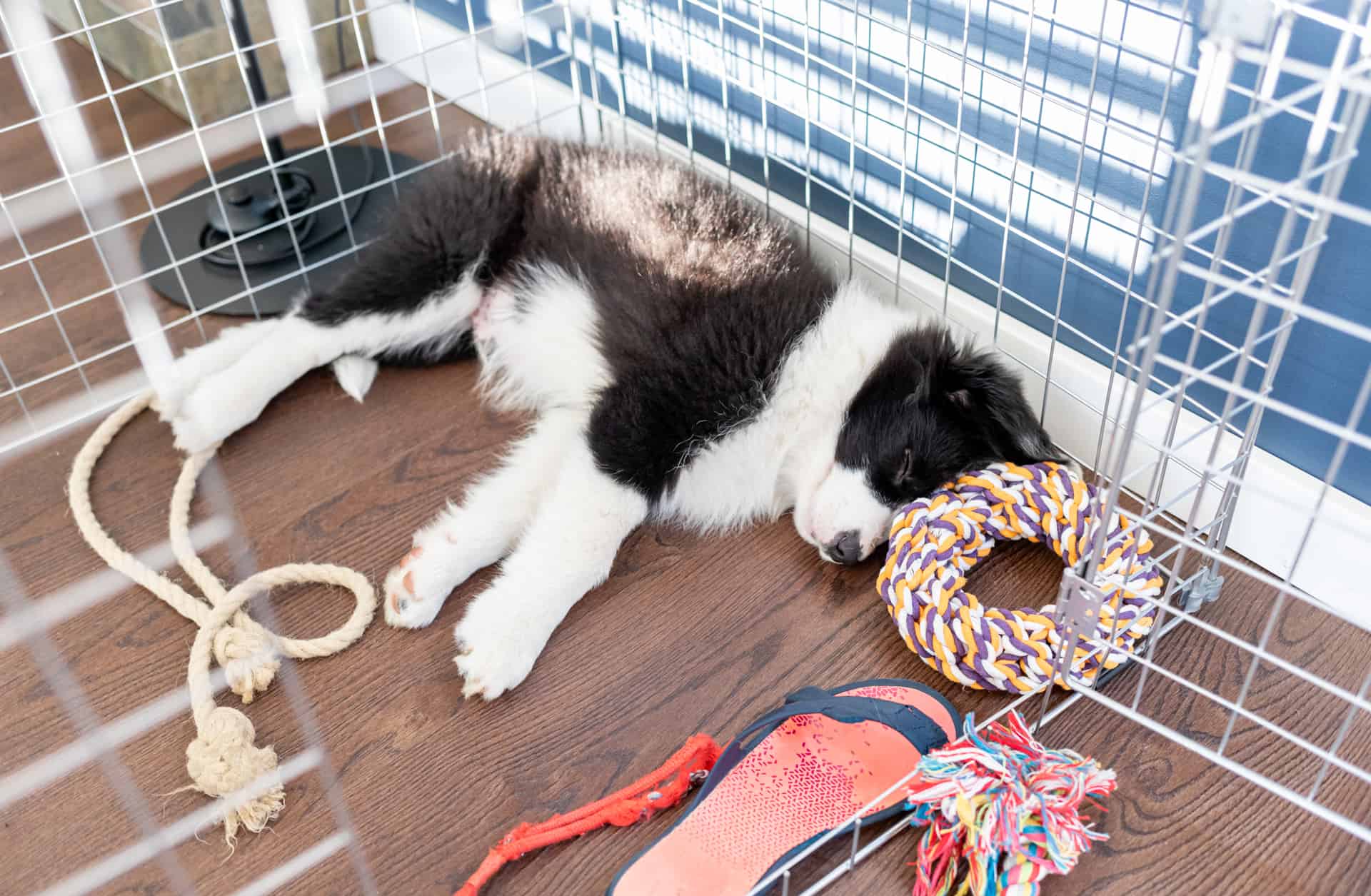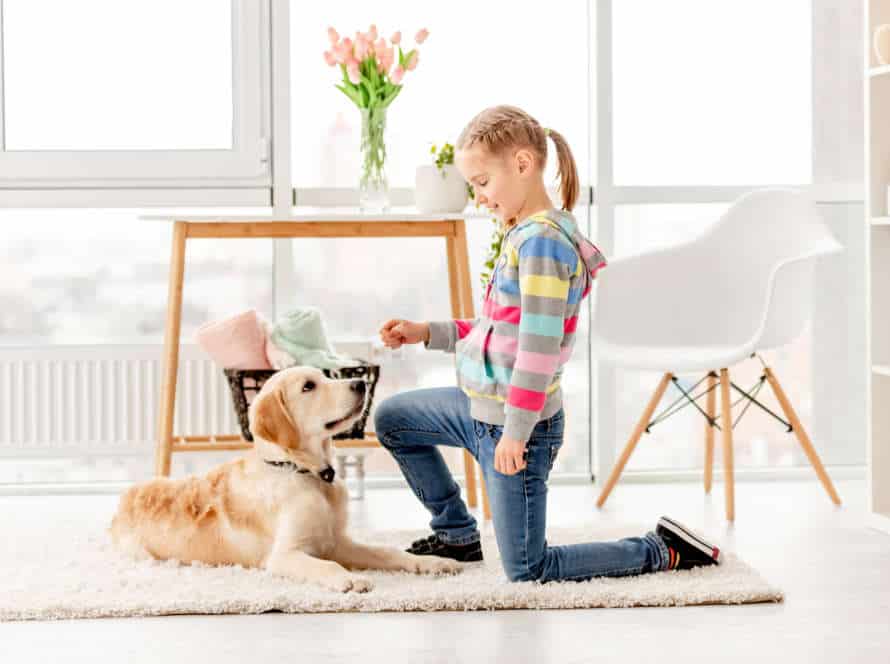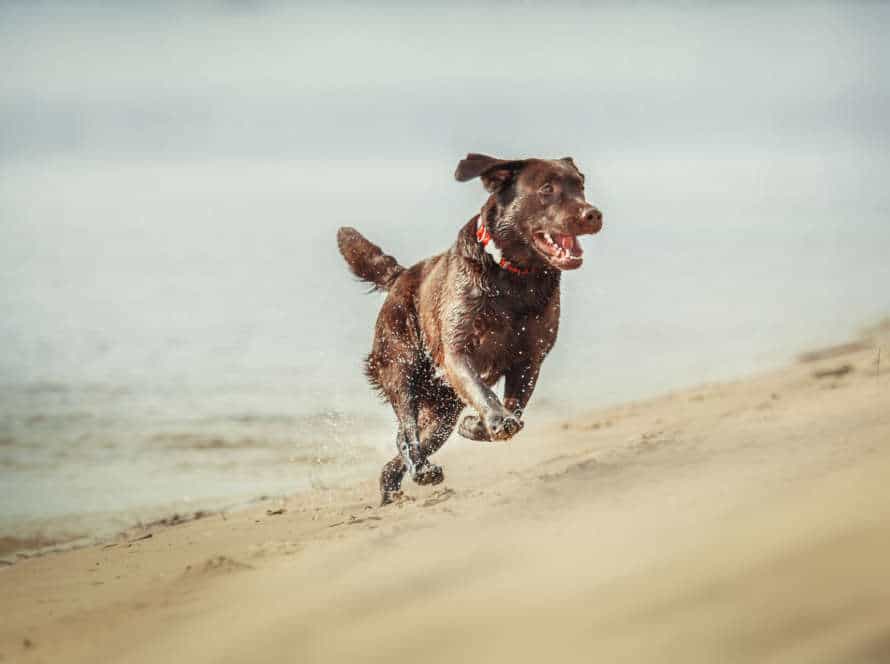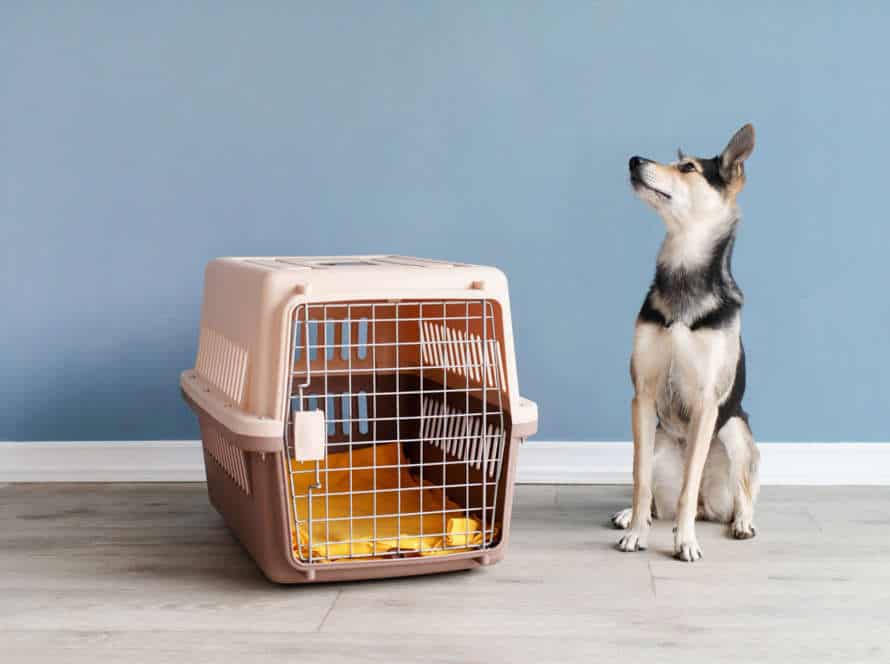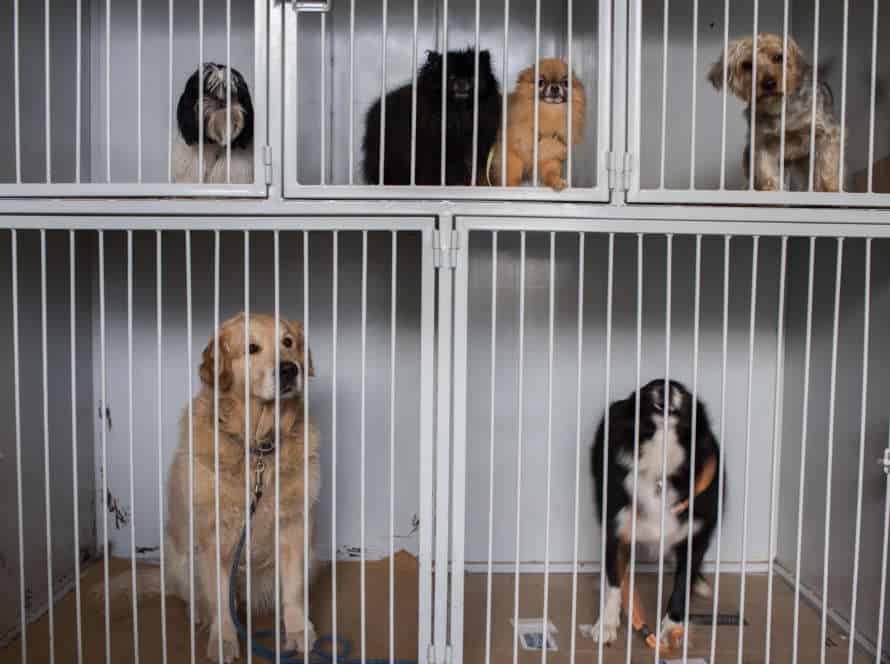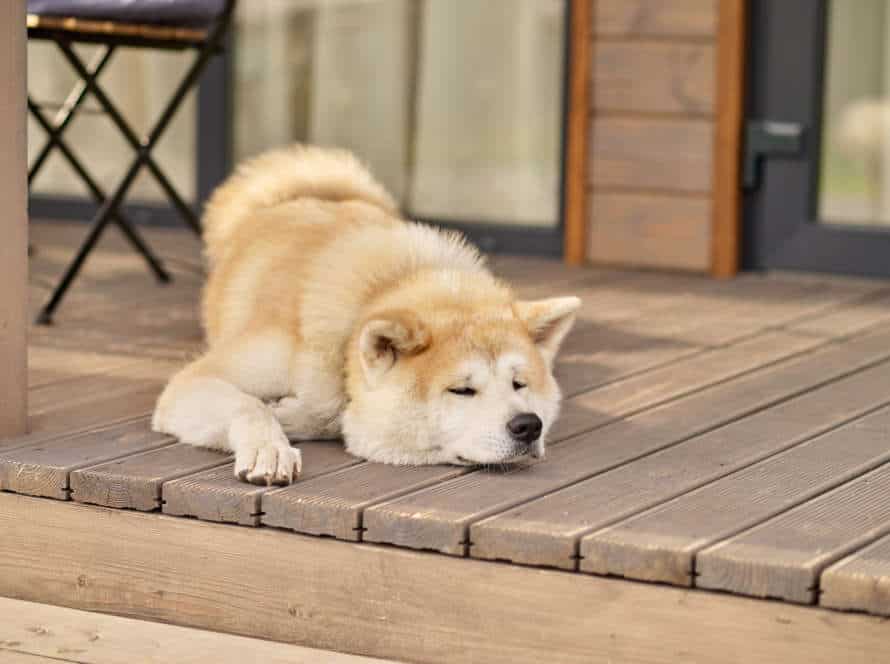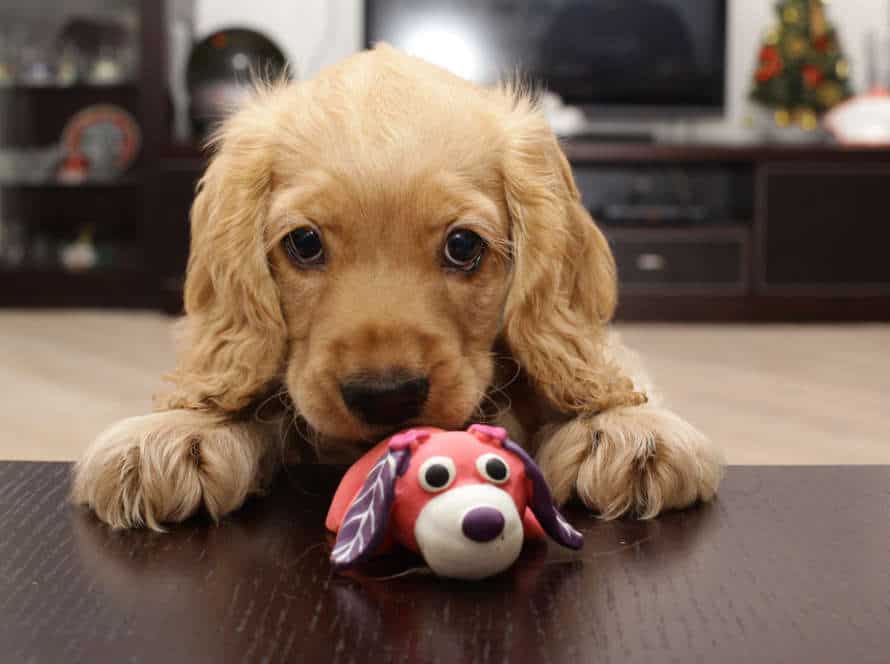Understanding Crate Training and House Training
Crate Training and House Training are two essential ways to potty train your pet. Crate Training means teaching them to stay in a crate for a certain amount of time. House Training involves teaching them to pee in a particular area in your home. This article explains why combining these two techniques is the best way to potty train your pet.
Defining crate training
Crate training is a way to house train your pup, using the crate as a safe, comfy spot when you’re away or occupied. Your pup can stand, turn and lay down easily in their crate. Here’s how to combine crate training with house training:
- Introduce the crate to your pup slowly, with treats, toys and positive reinforcement.
- Put the crate in a place where your pup can still see and hear you, but without being underfoot.
- Teach your pup a cue like “kennel” or “crate” so they know it’s a good spot.
- Never use the crate as punishment or leave your pup in it for too long without food, water or exercise.
This routine will benefit both you and your pup! Pro tip: Supervise your pup while they’re in their crate, especially during training.
Defining house training
House training is teaching your pet to go to the toilet outside. Crate training is teaching your pet to like their crate. Here are some tips:
- Introduce the crate slowly and reward with treats.
- Make it part of a routine.
- Take them out often and reward when they go in the right place.
- Be consistent and patient.
- Never use the crate as punishment, and give them supervised playtime outside.
Why combine the two methods?
Crate training + house training = success!
Crate training helps house training go faster and be easier. It gives the pup a special place to rest and play, while discouraging wrong behavior inside.
House training teaches dogs to pee and poo outside. Crates help keep them safe when they’re unsupervised. Plus, they won’t pee in their crate! So, both methods work hand-in-hand to create good habits fast and avoid costly messes.
Make sure the crate is comfy and airy. Increase the time spent inside gradually, and take regular potty breaks. In this way, dogs can adjust to the crate and learn proper house training at the same time.
How to Combine Crate Training and House Training
Crate and house training are both important for puppies. How can you combine them to get the best results? This article will answer that. We’ll give tips on how to setup the crate, use it, and use positive reinforcement to stop accidents. Get ready to learn the best practices for combining crate and house training!
Establish a routine for your dog
Creating a daily routine for your pup is key to both crate and house training. Here are some helpful tips to combine training methods and make a schedule that works for you and your pup:
- Make a plan: Have set times for meals, potty breaks, playtime, and crate time. Be sure to stick to it as much as you can to keep your pup on track.
- Crate for short duration: Start with short amounts of time in the crate and slowly increase them. This will help your pup get used to it and feel comfortable spending more time there.
- Take pup outside often: Take pup outside after meals, naps, and playtime to assist with house training.
- Reward good behavior: Use positive reinforcement to reward your pup for good behavior, such as going potty outside or staying calmly in the crate.
By establishing a routine, you’ll help your pup learn the house rules and feel more comfortable and secure. Pro tip: Be patient and consistent with your training, and your pup will thank you with excellent behavior and friendship.
Choose the right crate for your dog
Choosing the correct size and type of crate for your pooch is vital for successful training. Consider these factors:
- Size: Ensure your dog has ample room to stand, turn, and lie down comfortably. A tiny crate can be distressing, and a huge one can lead to house training problems.
- Material: Crates are made from wire, plastic, or fabric. Each have their advantages and disadvantages based on your dog’s size, temperament, and conduct.
- Location: Place the crate in a secluded, low-traffic room of your home. Your pup can see and hear you, yet still have their privacy.
- Accessories: Bedding, toys, and water bowls will make the crate more alluring and comfortable.
When uniting crate training and house training, keep an eye on your pup, stick to a regular routine, and reward good behaviour.
Introduce your dog to the crate
Introducing your pup to the crate can be tough. But, it’s necessary for house training and your doggy’s safety and comfort. Here’s some tips to make it a positive experience:
- Start Easy: Introduce your pup gradually. Leave the door open & put a comfy bed and fun toys inside.
- Reward: Use treats, toys & verbal praise when your pup goes near or in the crate.
- Short Periods: Start with short durations, then increase as pup is comfy & relaxed.
- Consistent Routine: Have a regular routine & stick to it. This helps your pup feel secure.
Remember, crate training should be done together with house training for optimum effect. Used positively and consistently, the crate can be a great tool for your pup’s training & development.
Successfully crate train your dog
Crate train your pup! It’s a necessary part of house training. Teach your pooch to sleep, chow down, and chill in their space. Here are tricks to make crate training and house training a breeze:
- Introduce your pup to the crate in a positive and inviting way, with treats and toys.
- Increase their time in the crate slowly, and start with only 20-30 minutes.
- Don’t leave your dog in the crate for too long, as it causes them stress.
- Be consistent, reward good behavior in and outside the crate, and never use it as punishment.
With patience and positive reinforcement, your pup will learn to see the crate as a cozy place. And voila! House training will be a piece of cake.
Introducing house training
Introducing house training to your pup or adult dog? It’s simple! Just mix crate training and house training. Here are some tips for a successful combo:
- Step 1: Start with crate training. Let your pup or adult dog get used to the crate for brief periods, gradually increasing the time.
- Step 2: Have a fixed feeding schedule. This will help regulate your dog’s bowel movements, making house training easier.
- Step 3: Take your dog out often. Do it first thing in the morning and after meals, naps, and playtime.
- Step 4: Reward desired behavior. Use treats, praise, and attention to encourage your dog to go potty outside.
- Step 5: Be patient and consistent. Teaching good house training habits takes time and repetition.
Combine these techniques and you’ll have a successful house-training experience with your dog!
Gradually transition from crate to house training
Crate and house training are two distinct ways to teach pups and dogs. Combining them both together can get the best of both worlds, with less drawbacks. Here are some tips for combining the two:
- Start with crate training. Stick to a consistent routine for feeding, watering, and potty breaks.
- Increase the time spent outside the crate for potty breaks until your pup gets used to going outside.
- Once they know where to go, use verbal cues and reward your pup with treats to encourage them.
- Keep giving them more freedom in the house, while still supervising and offering scheduled potty breaks outside.
Remember, consistency, patience, and rewards are the keys to success.
Troubleshooting
Crate training and house training can be tough! If your pup is having issues, it’s important to figure out why. Here are some tips to help you troubleshoot and get the best out of your pup’s training:
- Identify where the issues are.
- Figure out what’s causing the problems.
- Make the process smoother.
Common problems and how to overcome them
Mixing crate training and house training is an awesome way to house train a pup. But, it can be hard. Here are some troubles dog owners can face and how to fix them:
-
Pups whinin’ or barkin’ in the crate: To get past this, give treats and toys to your pup when they go in the crate. Gradually make the time longer every day.
-
Accidents in the crate: If this happens, take them out, clean it up, and try again later with a shorter time.
-
Fear or anxiety: Put a blanket over the crate to make a cozy den. Don’t leave them in there for long amounts of time.
-
Chewing or destructive behavior: Exercise them physically and mentally. Give them toys to chew on when in the crate.
Patience and consistency are important. Reward your pup for good behavior and they’ll feel safe in the crate.
Separation anxiety
Separation anxiety is a common issue with puppies when their owners are not around. To help reduce this, crate training is a must. But, it should be combined with other house training measures for best results.
Here are some tips:
- Pick a crate size that is just right for the pup. It should be enough for them to lie down, turn and stand comfortably.
- Make the crate comfy with soft bedding, treats, and toys.
- Never shove the pup in the crate. Instead, give them food and have fun with them in the crate.
- Start crate training early and increase the time gradually.
- Crate and house training should go hand in hand. Once out of the crate, take them outdoors for potty.
- Positive reinforcement methods like treats, toys, and praise should be used to encourage good behavior.
- Also, the crate should not be used for punishment, but as a safe, cozy space when alone.
Accidents in the crate or house
Crate training is a great way to house train your pup. But, accidents may still happen. Here are some tips to help you out.
- Firstly, keep a steady feeding and watering schedule. This makes it easier to know when your pup needs to go outside.
- Secondly, watch their body language. If they are sniffing, circling, or whining, they probably need to go outside.
- Thirdly, make sure your pup gets enough exercise and mental stimulation. A bored or restless pup may have trouble holding it in.
- Lastly, always clean up accidents with an enzymatic cleaner. This helps stop repeat accidents in the same spot.
With these tips and consistent training, your pup will be house trained in no time!
Tips for Success
Crate training and house training are crucial for a good-mannered, house-trained pup. Combining these two training procedures can be an awesome way to guarantee your pooch comprehends all the regulations of your home. Here are a few tips for success when combining crate and house training:
Be consistent
Consistency is vital to combining crate training and house training for your pup successfully. Here are some tips to help you stay consistent and succeed:
- Set a routine: Make a regular routine for your pup’s feeding, playtime and potty breaks. This will help them comprehend when it’s time to eat, play and use the bathroom.
- Use the crate: Use the crate as a tool to manage your pup’s behavior and help them learn bladder control. Put your pup in the crate for brief periods during the day and at night. Take them out to go potty at regular times.
- Reward good behavior: Give your pup praise and treats when they act well, like going potty outside or staying relaxed in their crate.
- Be patient: House training takes patience and time. Remember that accidents can happen. It’s important to stay consistent in your training.
With consistency, patience and positive reinforcement you can join crate training and house training and give your pup a lifetime of good behavior.
Use positive reinforcement
Positive reinforcement is a great way to train your pup. Here’s how you can make it work:
- Offer treats or praise when your dog goes into the crate or eliminates outside.
- Provide a comfy environment in the crate – toys and bedding, to help them feel safe.
- Create a routine for elimination. Take them outside, use the same command, and reward them when they do it right.
- Be consistent with the house and crate training. With patience and positive reinforcement, you can train your pooch calmly and successfully.
Remember to exercise and play with your dog
Don’t forget to exercise and play with your pup. It will keep them content, healthy and calm when crate and house training. Here’s what to remember:
- Schedule daily exercise. Go for a walk or hit the dog park once a day to expend energy and reduce anxiety.
- Playtime: Devote 10-15 minutes of fun games like fetch or tug of war to cut stress and build your bond.
- Crate spot: Put the crate in a room where they can spot or hear you – like the living room or bedroom – to feel secure.
- Positive rewards: Use treats or compliments to reward good behavior when crate and house training.
These tips will make the training process smoother and successful for you and your pup!
Patience and understanding is key
Combining crate and house training takes patience. It might take a while for your furry friend to get used to their new plan. Here’s some advice for success:
- Start small. Just a few minutes in the crate at first. Then build up.
- Be consistent. Stick to a set feeding and potty schedule.
- Reward good behavior. Praise your pup when they do what they should.
- Be patient. Accidents and delays will happen, but with enough time and routine your pup will learn proper habits.
Frequently Asked Questions
1. How do I start crate training my puppy?
Start by introducing the crate as a comfortable and safe space for your puppy. Place soft bedding and toys inside the crate and leave the door open for your puppy to explore. Reward your puppy for going inside the crate and gradually increase the amount of time they spend inside.
2. How do I combine crate training with house training?
Use the crate as a tool for house training by encouraging your puppy to go outside to potty after being inside the crate for a period of time. This will teach your puppy that going potty outside is the appropriate behavior and they will learn to hold it until they are let out of the crate.
3. How long should I keep my puppy in the crate?
Puppies should not be kept in the crate for more than a few hours at a time, depending on their age and bladder control. A general rule of thumb is to add an hour to the puppy’s age in months and that is the maximum amount of time they can hold their bladder.
4. What do I do if my puppy whines or cries in the crate?
Ignore your puppy’s cries and whines, as responding to them will only reinforce the behavior. Instead, wait until they are quiet and calm before letting them out of the crate. This will teach your puppy that quiet behavior is rewarded with freedom.
5. Can I use the crate as punishment for bad behavior?
No, the crate should not be used as a punishment for bad behavior. It should be a safe and comfortable space for your puppy, and using it as punishment can create negative associations with the crate.
6. Should I leave food and water in the crate for my puppy?
No, food and water should not be left in the crate as it can encourage your puppy to eliminate inside. Instead, ensure they have access to water and food outside of the crate.

